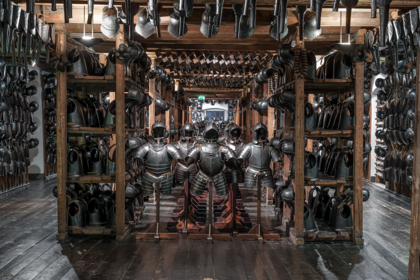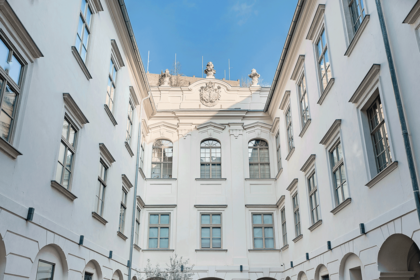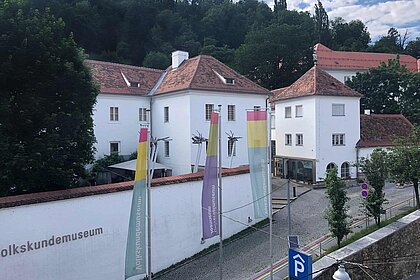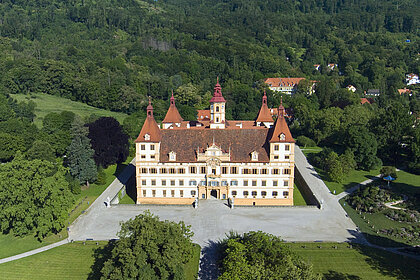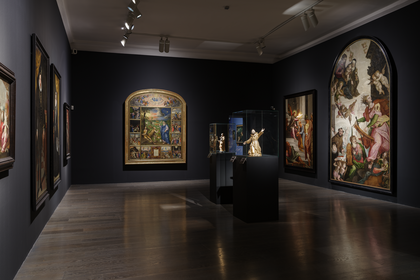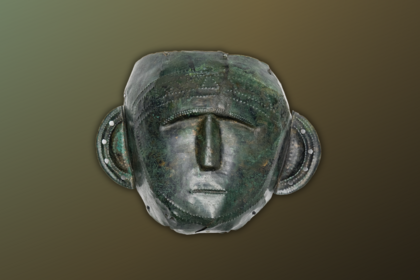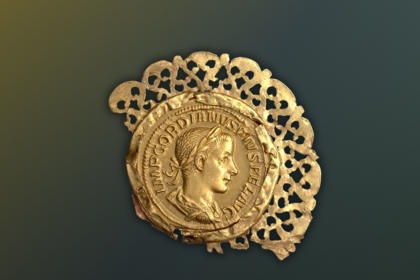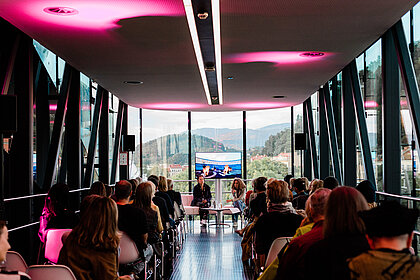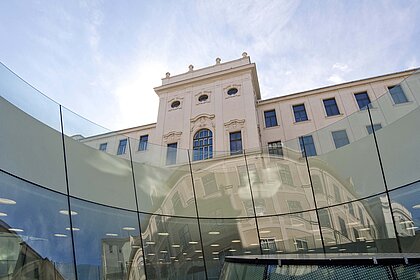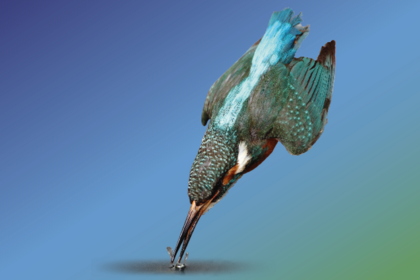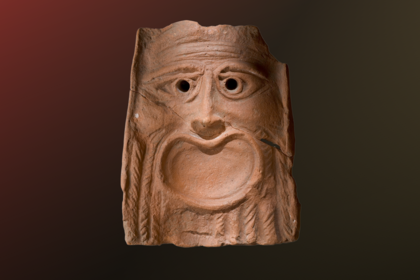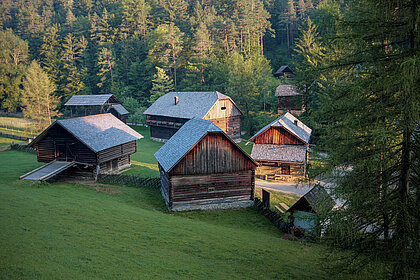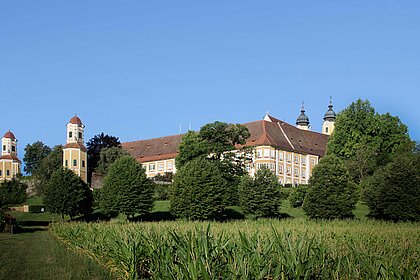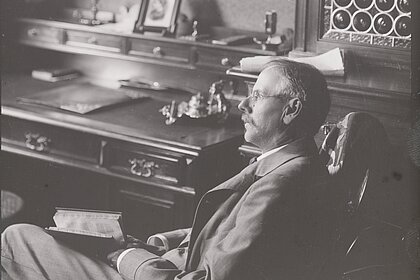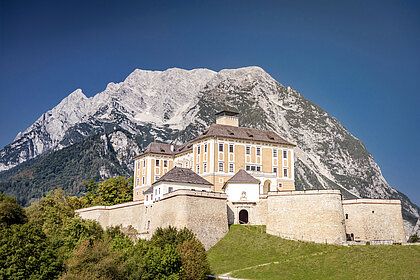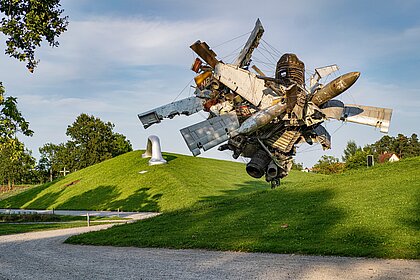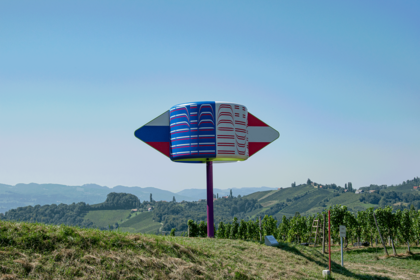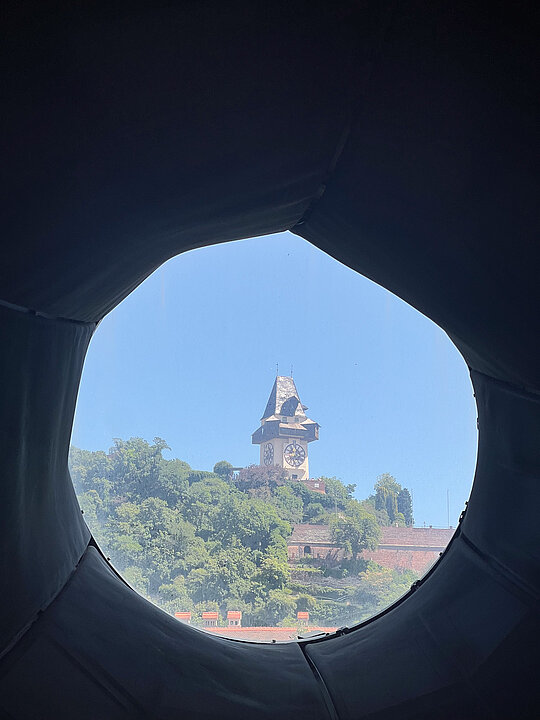20. August 2025, Gabriela Pérez Valle and Calista Tienvrot
A summer in the Kunsthaus Graz
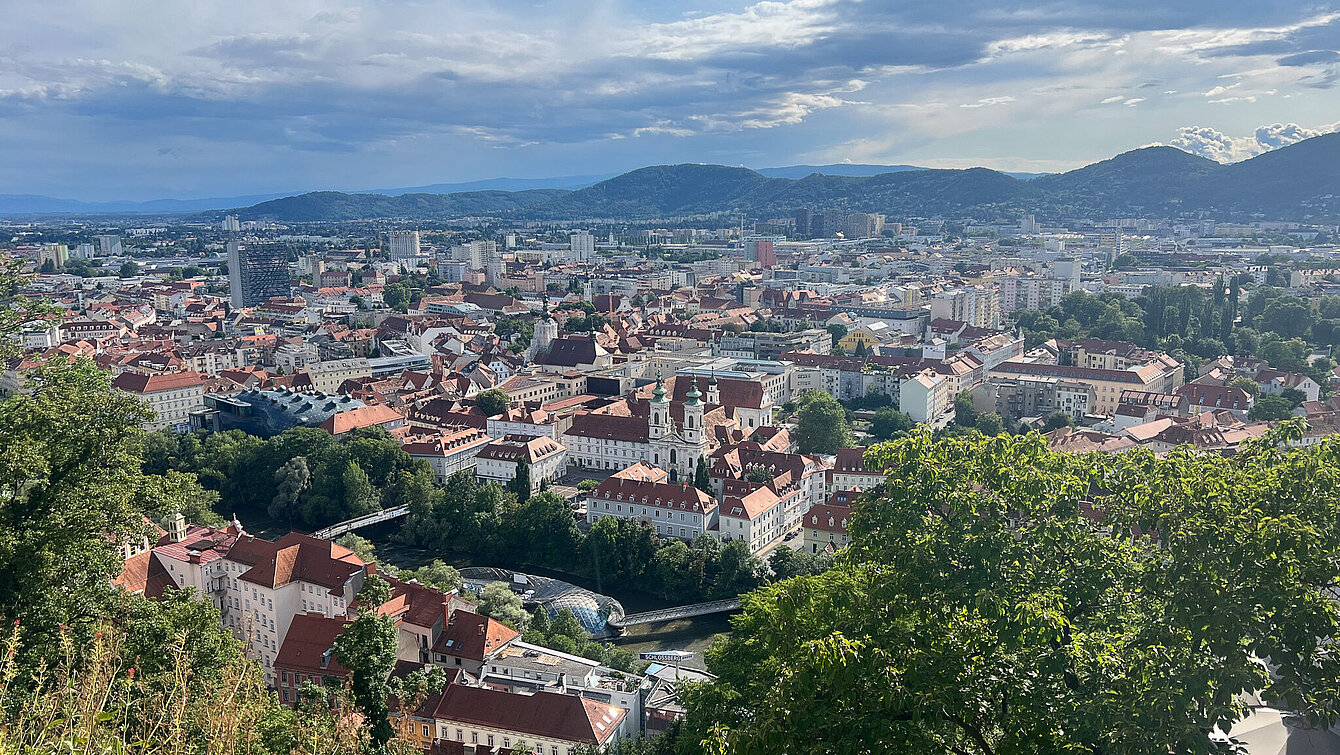
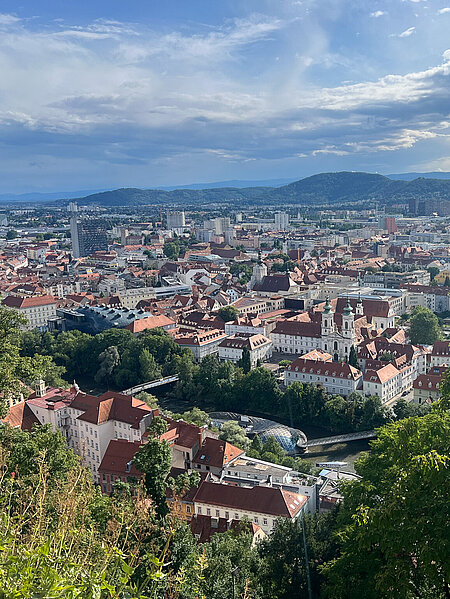
Bildinformationen
As part of our master's degree in Education in Museum Education and Heritage, coordinated by the University of Glasgow and the European Museum Academy programme, we spent July at the Kunsthaus Graz for our summer school. We were invited to observe, reflect, and engage with the daily life of the museum. Throughout this time, we met with professionals from across departments and visited other institutions in the region, all while exploring how theory and practice meet within the museum space.
These are our reflections on this experience
From the very beginning, what struck us most about the Kunsthaus Graz was the building itself. It’s hard not to be captivated by its appearance. Located in the middle of a city famous for its beautiful baroque façades, this futuristic building stands out with its rounded, bulbous shapes that contrast with the sharp angles of the surrounding streets and the historic Old Town.
The challenge of describing the observed forms is stimulating, inviting any visitor to use their imagination. This is where the educational experience of the space begins. When we first saw it in person, a drop of mercury and a bean were the first things that came to mind, but later we discovered it is popularly known as the city’s "Friendly Alien."
The Kunsthaus is, in essence, a living entity. This was the premise of its architects, Peter Cook and Colin Fournie, members of Archigram, a collective that embraced organic forms. Although the concept had been in the architects' minds for years, its construction was finally realised in 2003 when Graz was designated the European Capital of Culture.
The tension between old and new became the starting point for many of our reflections. The building is part of the blob architecture movement, and its biomorphic structure reacts to the environment, even requiring a cooling system during summer heatwaves, feeling like a living entity. Its presence raises a lot of questions before we even walk through the door: What do visitors expect from a place like this? How does such unique architecture influence our sense of learning, our curiosity, or even our feeling of belonging inside?
Our bachelor's studies provided a foundational way of looking at the world, and we've used our backgrounds in anthropology and communication to complement our master's program in Museum Education and Heritage. We feel very fortunate to have been selected for this summer school at a contemporary art institution. It's given us a chance to fully and practically observe the deep intersection between these disciplines. The museum experience is also an anthropological one; museums construct meaning, engage with cultural practices, and interpret objects.
Throughout the month, we met with many professionals working at the museum, from curators and educators to the marketing team, the director, and even outside professionals such as restoration and conservation staff. Everyone was open and generous with their time, and each discussion showed a different side of museum work. Creating an exhibition or welcoming visitors involves many people, each with their own knowledge and responsibilities, and collaboration is key to making it all function.
Accompanied by staff members and Elia Vlachou, a juror for the European Museum Academy and our mentor during the course, we had the chance to visit other cultural institutions in and around Graz. We explored places like the New Gallery, the Austrian Sculpture Park, and the Open Air Museum in Stübing. Each offered a new way of thinking about education and audience engagement.
One of our favourite visits was to Salon Stolz, a sound-based museum that connects music, dance, and movement. It made us reflect on the importance of inclusion and sensory experiences in museum spaces.
"On Love Afterwards" by Milica Tomic
The Kunsthaus, with its utopian design, became the backdrop for an ironic coincidence. Just days before the arrival of the artist Milica Tomic's exhibition, Graz was shaken by a shooting. Despite the tragedy, the museum decided to proceed with the opening of On Love Afterwards, an exhibition curated by Andreja Hribernik and Irena Borić that reflects on violence, war, love and collective memory in different parts of the world.
The museum team had to grapple with the question of the institution's role in the face of such events. Their conclusion was to act with sensitivity and discretion, without ignoring the context around them. However, the promotional image for the exhibition sparked debate: it showed the artist crossing a street with a long rifle in her hand. The decision to display this image across the city so soon after an attack raised questions about boundaries and provocation.
Inside the exhibition, the curatorial line guides the visitor on a journey where memory is the central theme. One of the most impactful works, for us, was "XY... ungelöst. Reconstruction of the Crime," a 1999 video where artists from Belgrade posed motionlessly, dressed in replicas of the clothes worn by 33 Albanian, then Yugoslavian citizens, who during a protest in Kosovo, in 28th March 1989 became victims of a massacre by hands of the Serbian police and army.
The work aimed to preserve the memory of an act that was never publicly acknowledged, forcing viewers to bear witness to the reconstruction of a crime. Despite being created over two decades ago, the piece remains deeply relevant, resonating with the violence and massacres we witness daily.
As Alexandra Trost, the curatorial assistant, explained, the exhibition goes beyond a simple presentation of different forms of violence. It confronts us with situations we might not have considered, connecting distant cultures through the shared experience of violence. These defining experiences shape a generation's feelings and their way of interacting with the world.
Conclusion
Being at Kunsthaus every day gave us the chance to observe how a museum functions from the inside. Through conversations with staff, guided visits, and daily exploration of the space, we were able to reflect on how the ideas we studied during the year are applied in practice.
Some scheduled group visits were unfortunately cancelled, which limited our opportunity to observe educational activities for specific audiences. However, this shift allowed us to pay closer attention to how the museum engages with its general visitors and how architecture, exhibitions, and atmosphere all contribute to learning beyond formal programmes.
This experience helped us to grow both personally and professionally. We feel more confident now in our desire to work in museum education and audience engagement, and we’re more aware of the questions we must keep asking as cultural professionals. We are very thankful to the Kunsthaus Museum Graz team and to the European Museum Academy for this opportunity. We left with many ideas and even more curiosity than when we arrived, which, we believe, is one of the best things a museum can offer.
